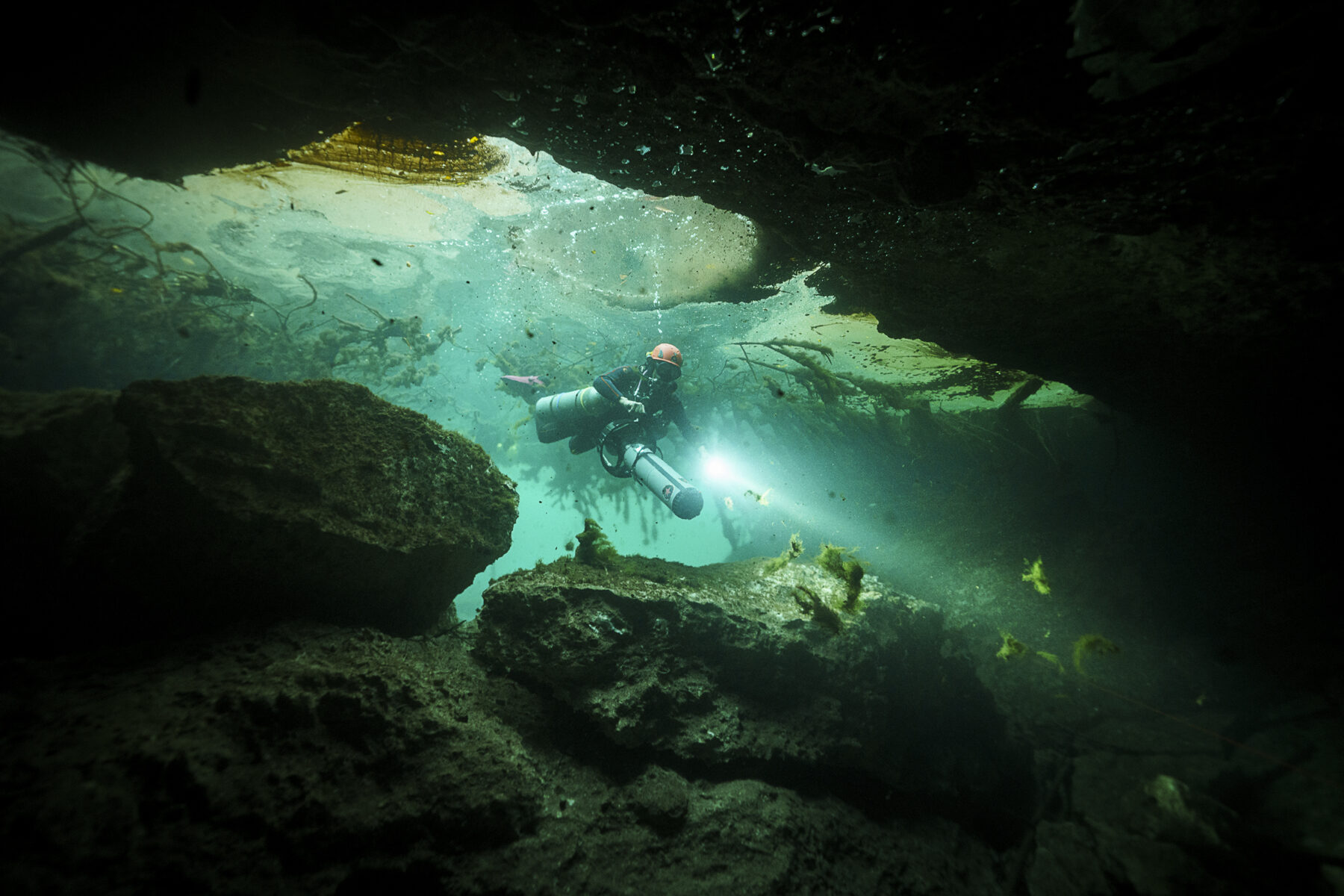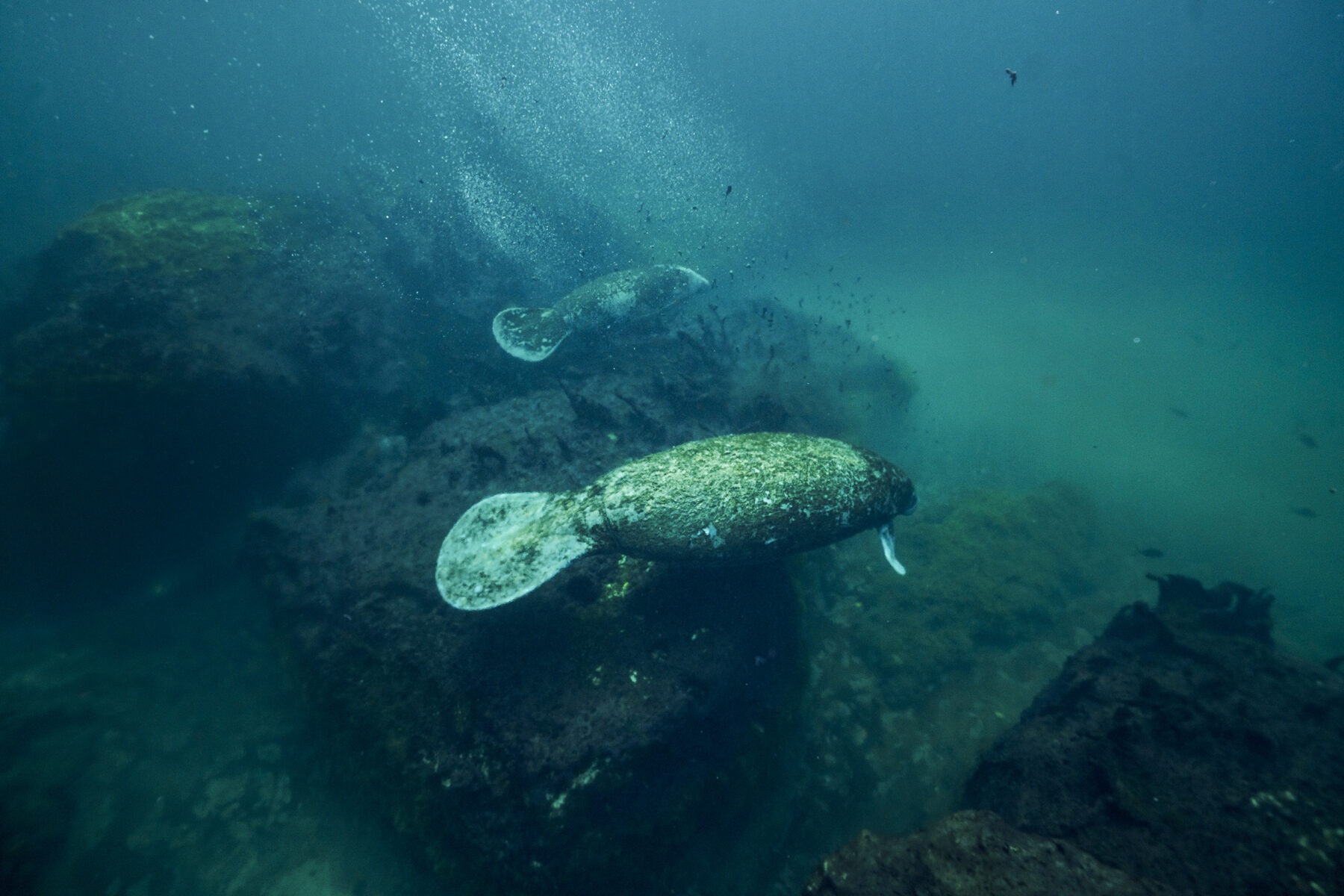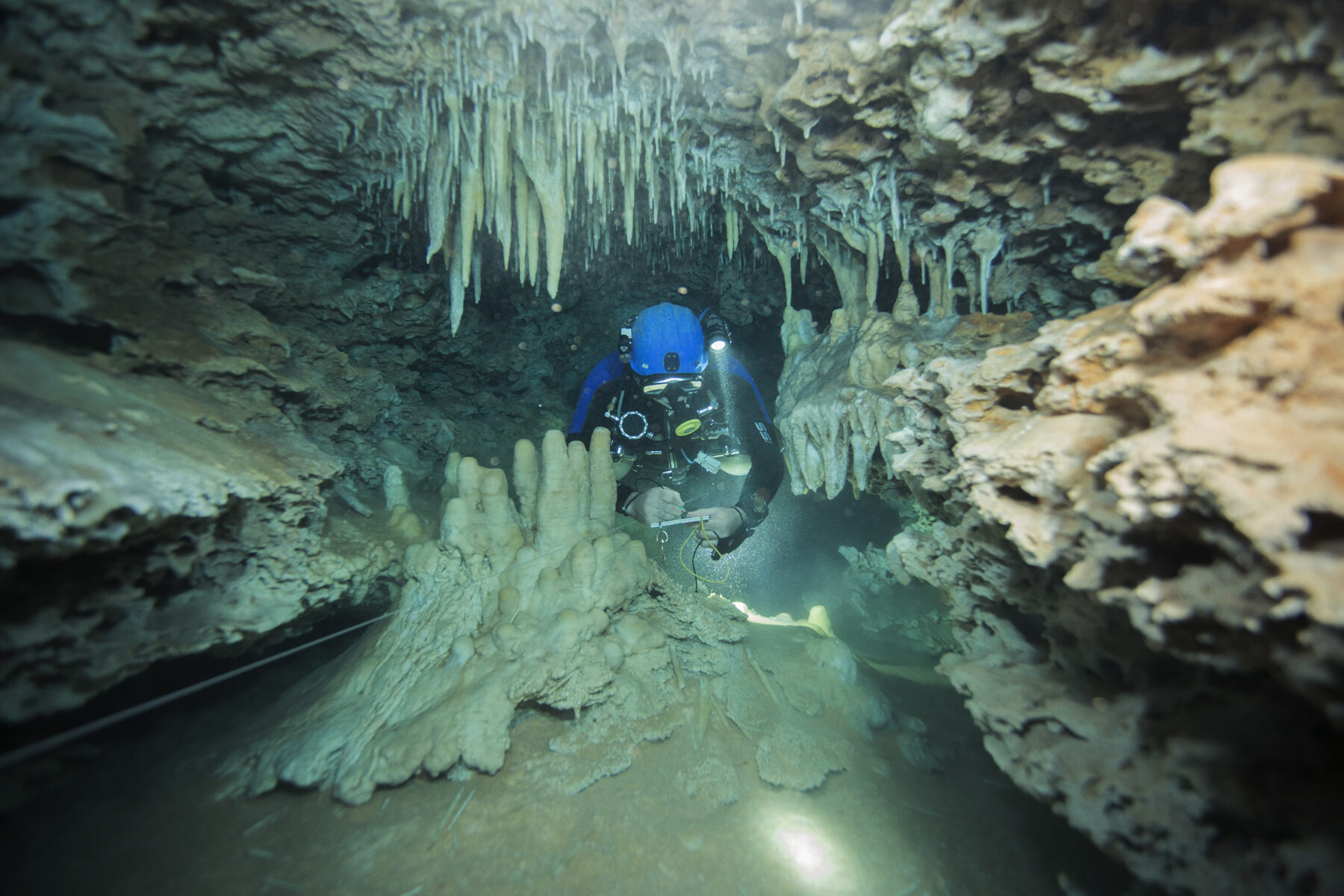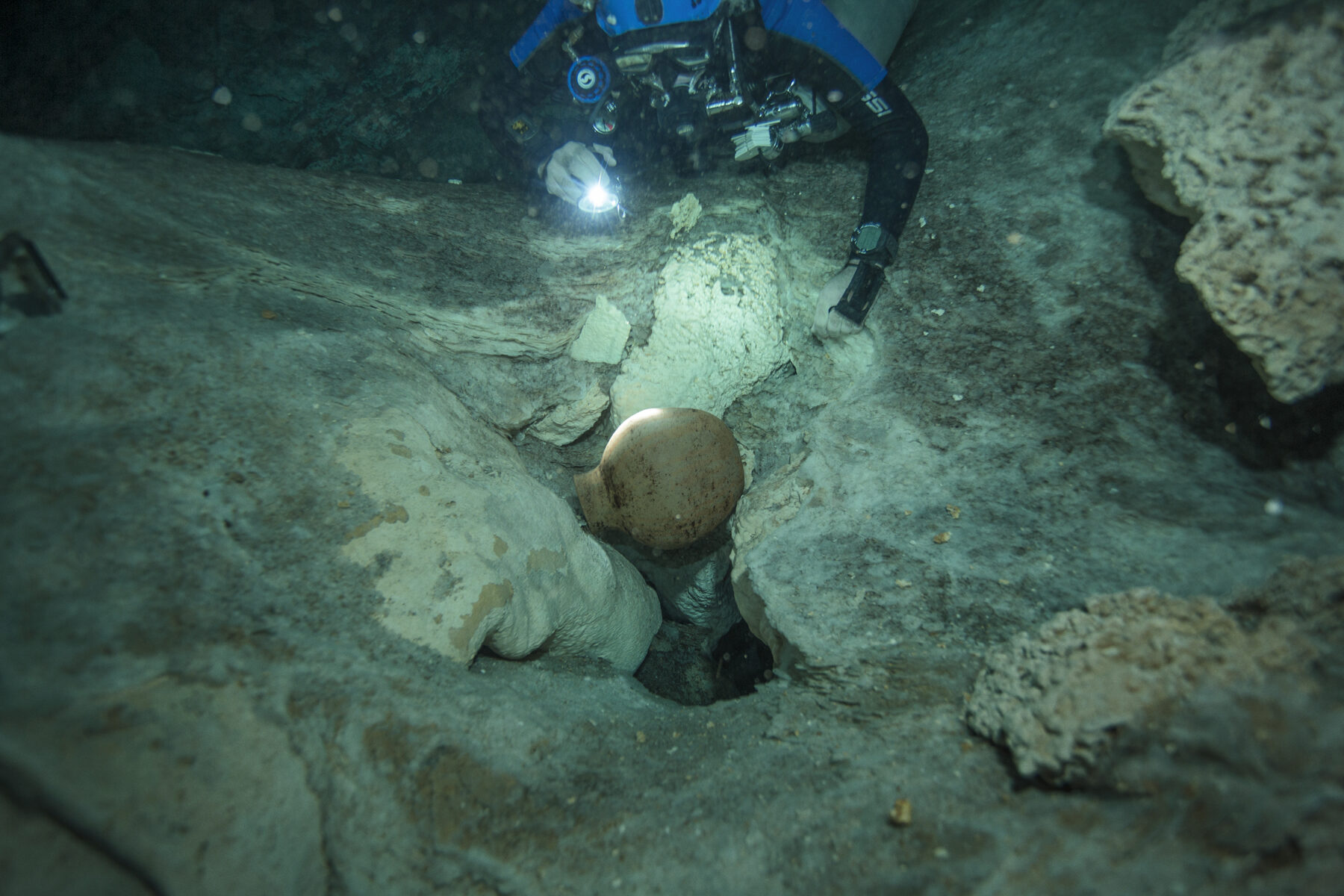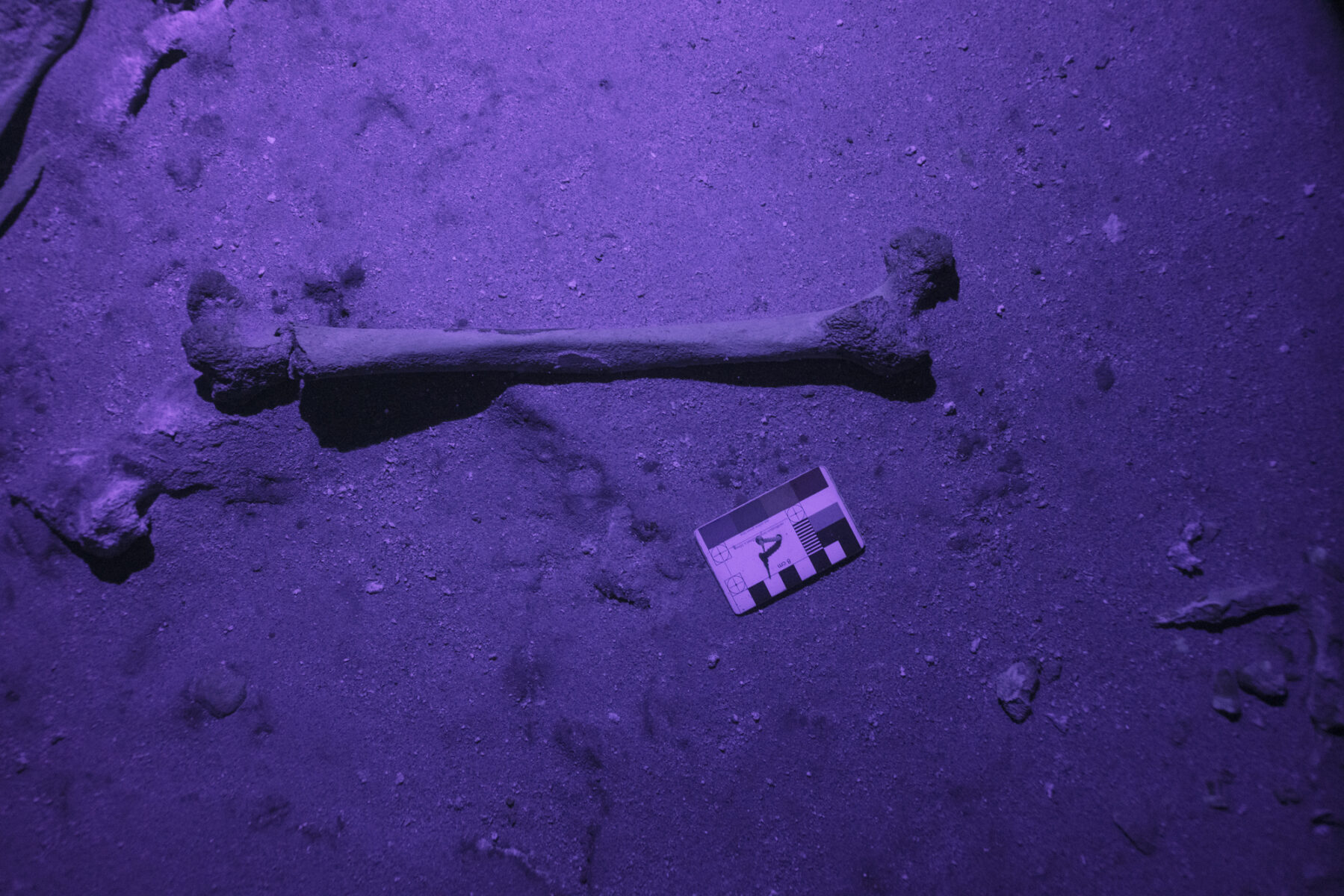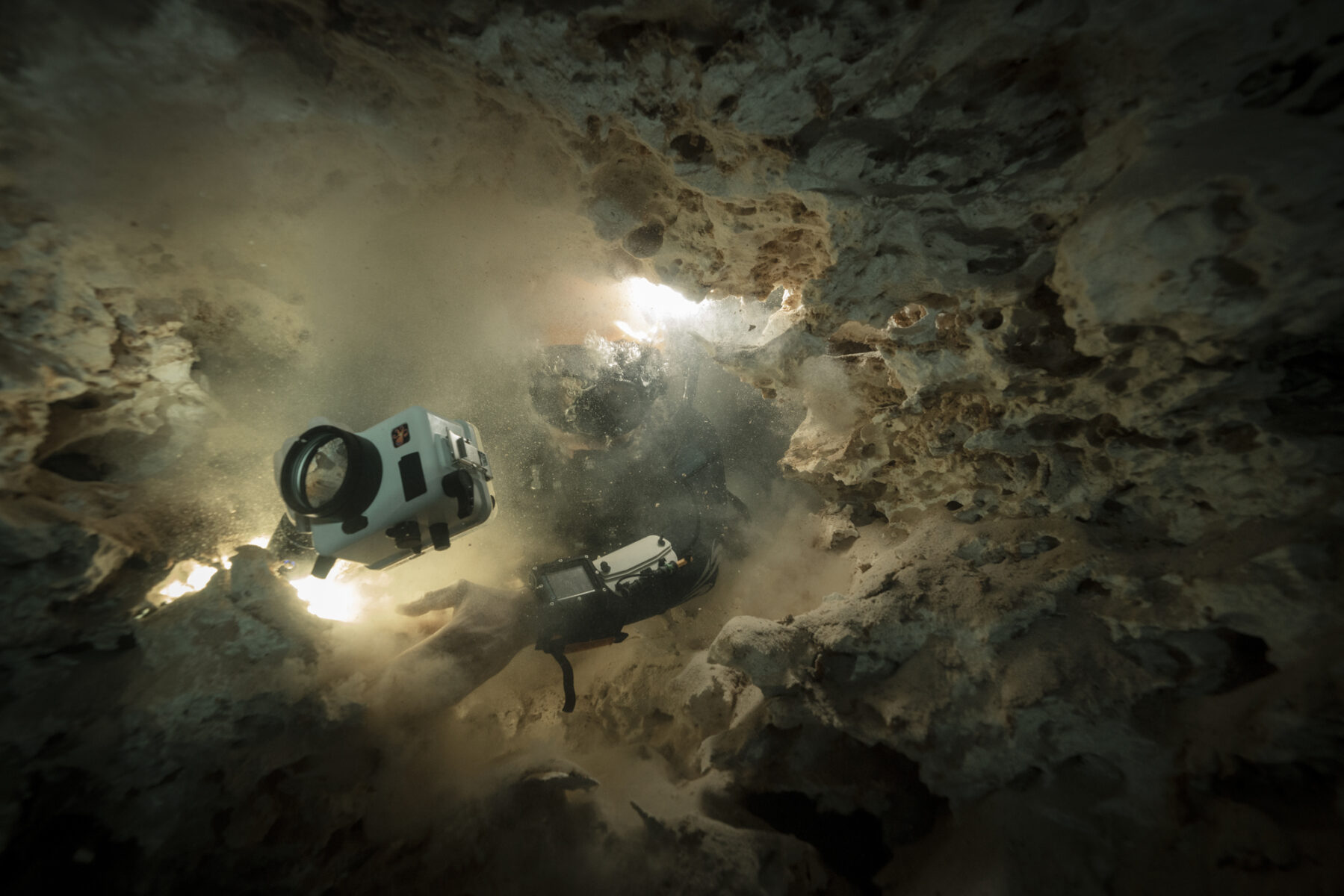Cave Diving Exploration
In cave diving, there is no surface. Exploring takes the diver far into caves; it takes hours to get out. Squeezing through tight spaces underwater, sometimes with zero visibility, can sound like a nightmare, but seeing the submerged caves and making discoveries has become a passion.
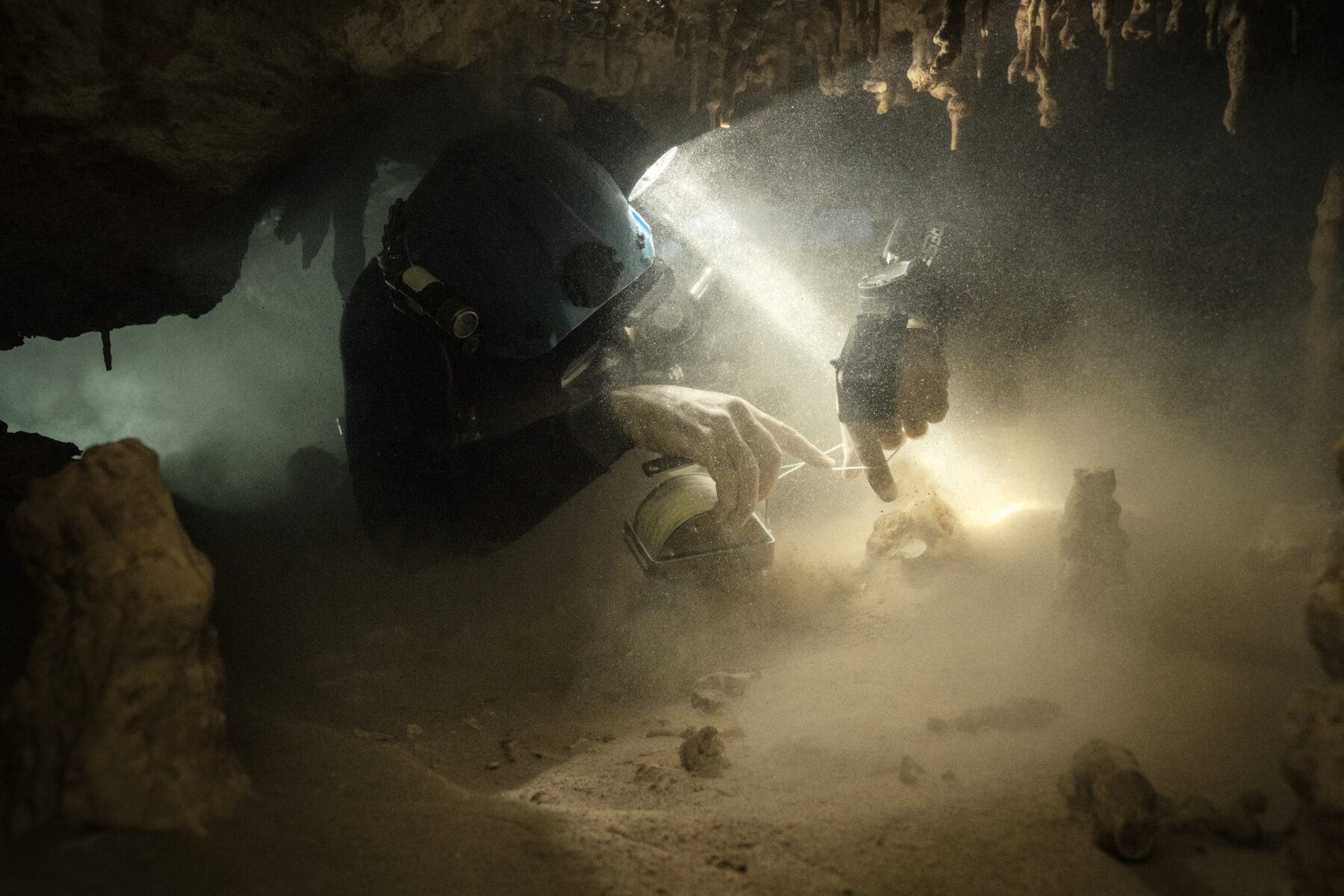
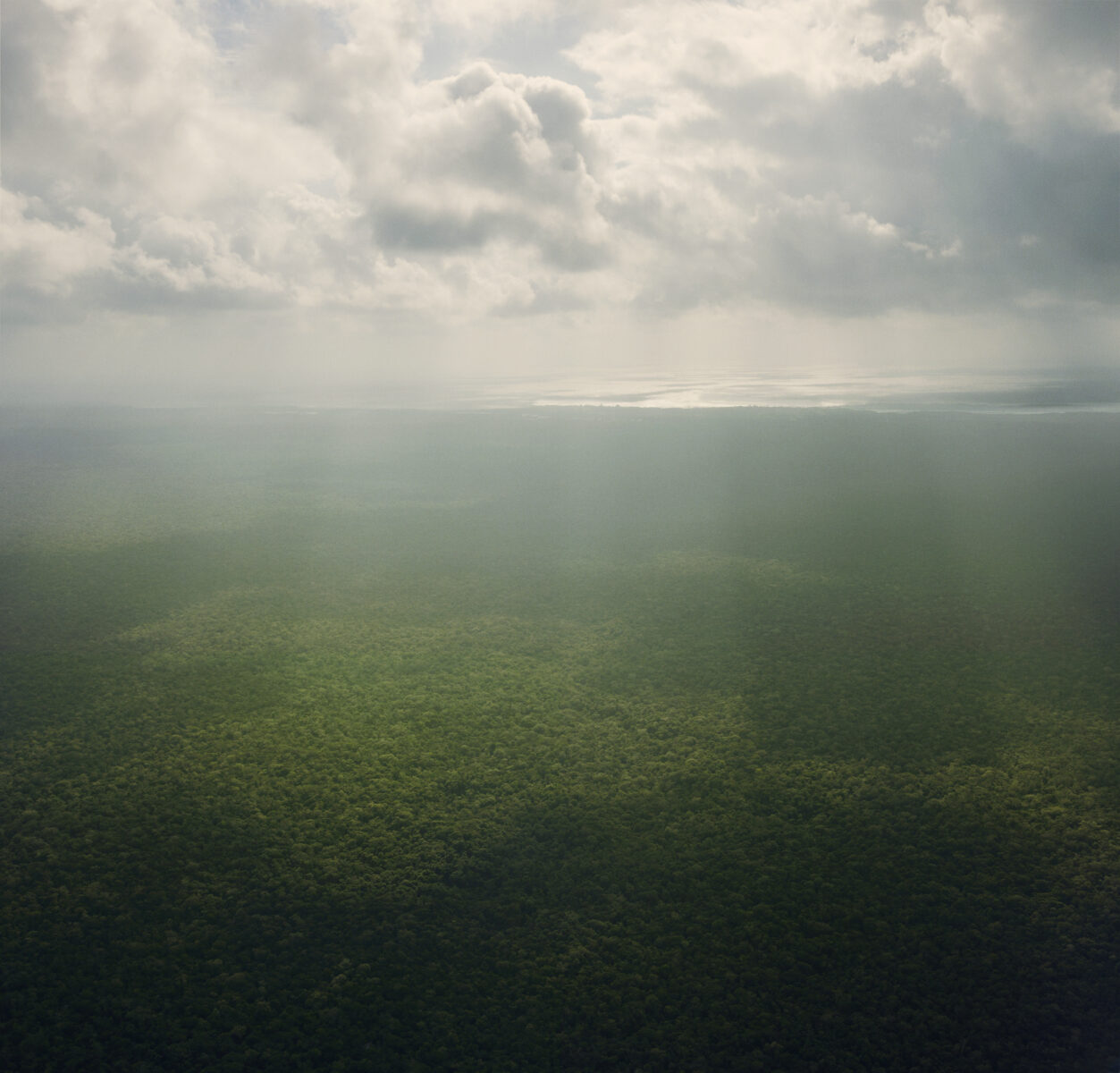
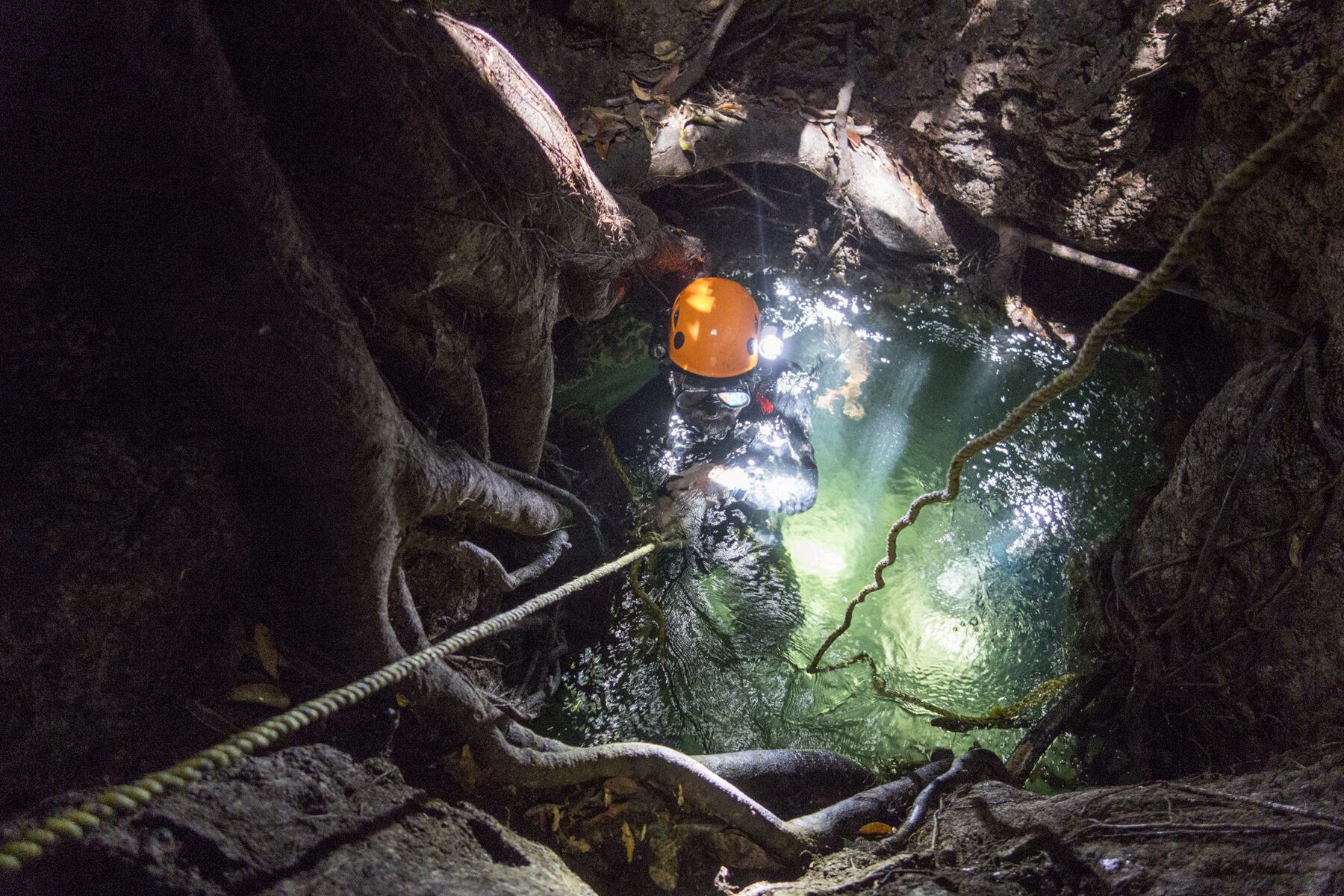
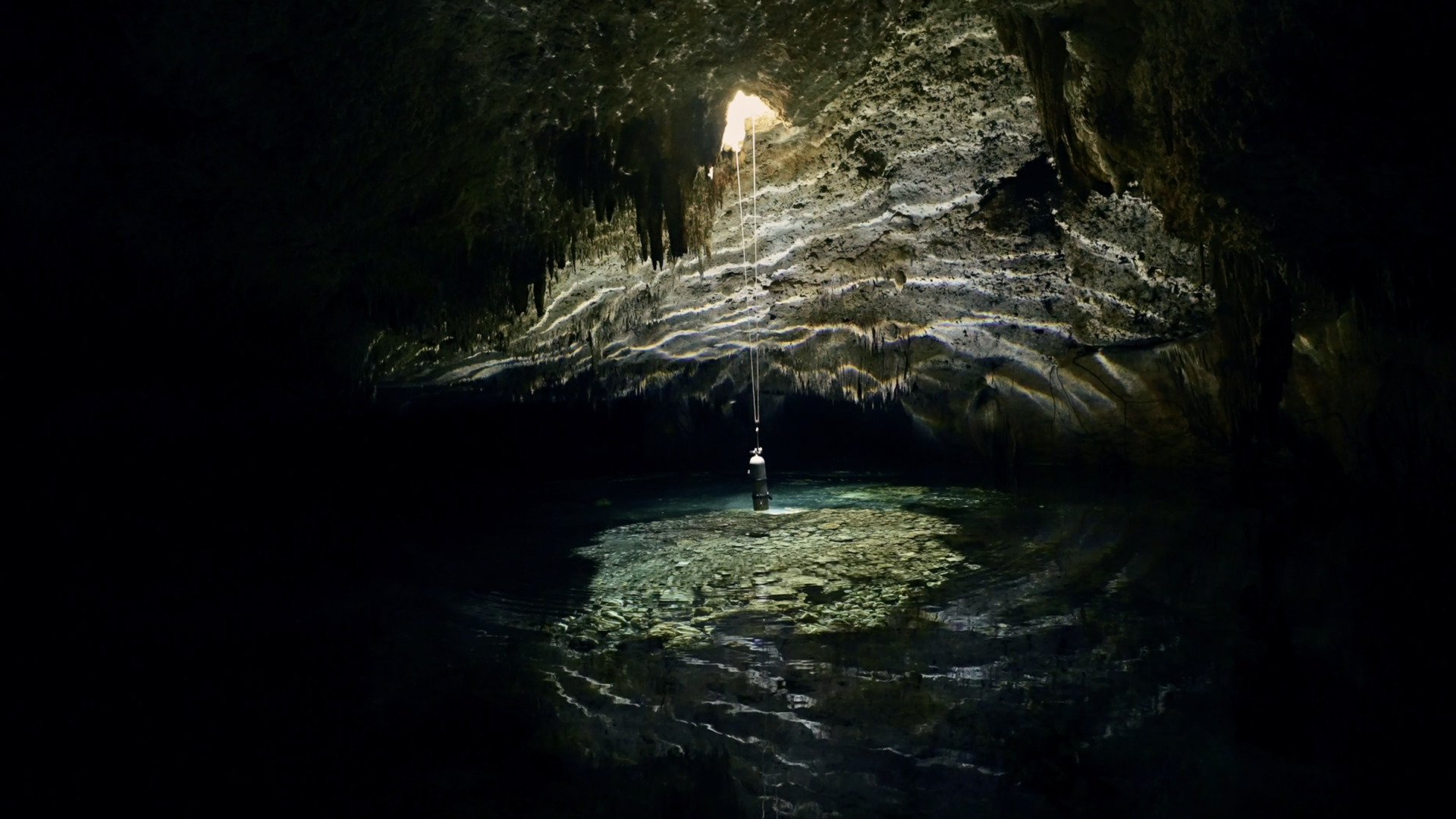
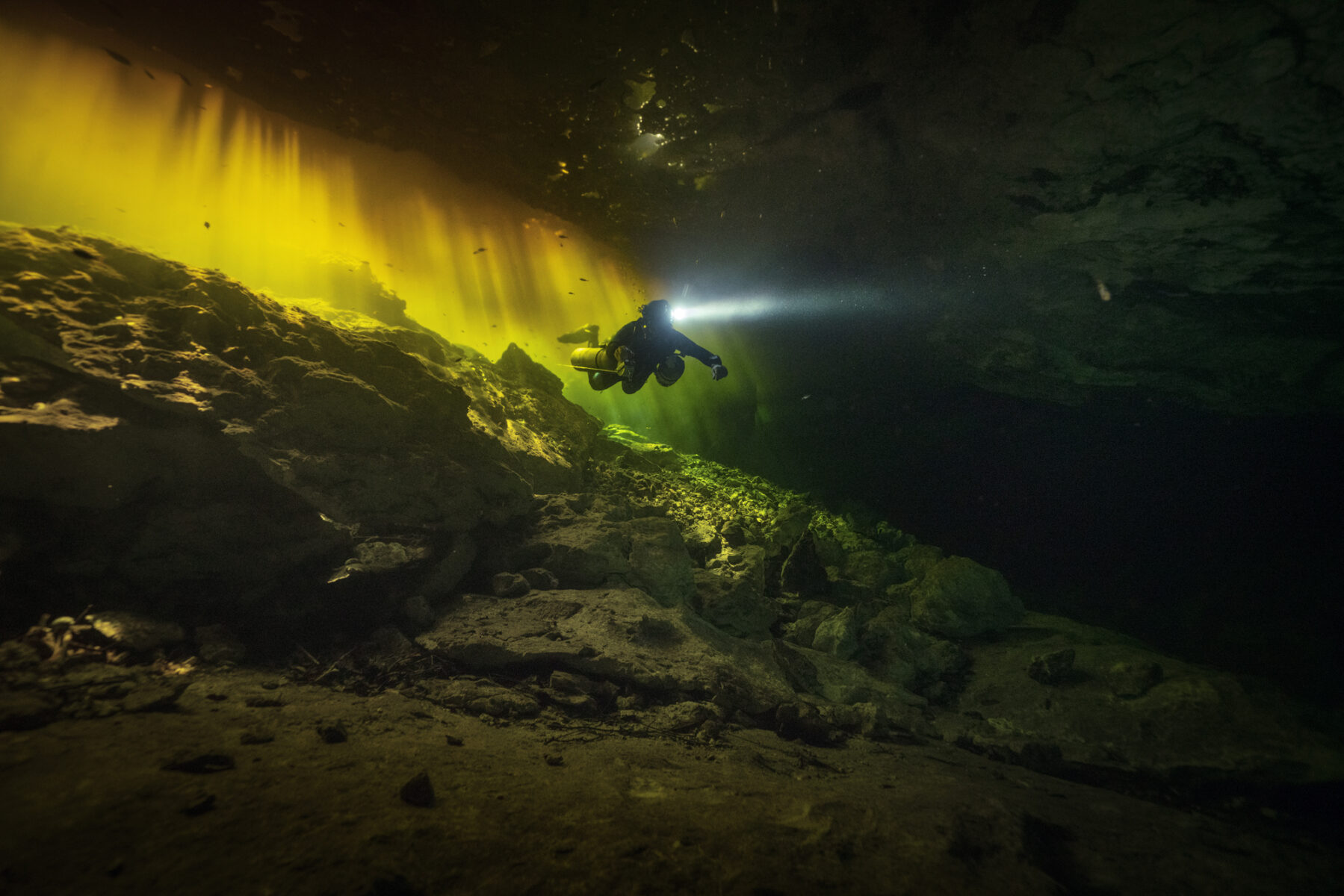
For over a decade, Klaus Thymann has worked as a journalist and conducted cave diving expeditions in Mexico’s Yucatán Peninsula.
The geology of the area is unique. On the Yucatán, there are no aboveground rivers. The water flows in a hidden underground network of flooded freshwater caves. This aquifer is the only source of freshwater, the basis of all Yucatán ecosystems. It is also one of the biggest aquifers in the world and connects through underwater caves to the Mesoamerican Reef, the largest transboundary reef system in the world.
The cave systems are largely unexplored. No technology exists to map them; only cave divers can reveal the paths. This uncharted network is mostly invisible from the surface, hidden in the submerged caves. Cenotes, lagoons, and a few channels created by the Maya offer hints of the water that flows beneath.
This experience has given him unique knowledge and insight, allowing him to work on many unusual and exciting projects.
Thymann’s work has centered around creating a public understanding of the importance of this hidden aquifer. All life in the peninsula depends on the freshwater in the aquifer, but it is not protected. Urbanization in the region has resulted in devastating pollution from the inland jungle to the ocean’s reef.
The freshwater flow brings any pollutants through the network out to the ocean and the Mesoamerican reef. Thymann’s work with the FLOWS film series featuring music by Thom Yorke created significant awareness of the interconnectivity of the ecosystems. Additional credit should be given to the Lighthouse Foundation which supported the films and, with the help of Catalina De Prince, created local screenings, workshops and university collaborations.
When Thymann’s long-term collaborator Alessandro Reato told him he had found a set of human bones, the two instantly got to work. Thymann created a digital terrain model with surface elevation so other scientists could investigate the site from the safety of their office. The bones are located far into a cave and sit at 10 m depth. Reato and Thymann are working with the authorities for permission to carbon test a tooth from this skeleton. Past discoveries in this area date back to the Little Ice Age.
Not all goes to plan during underwater cave exploration. The consequences are more drastic in cave diving than ocean diving because there is no surface, and the only air supply is the tanks.
There are many ways to die in a cave, but most problems come from navigation errors – a diver gets lost, never finds the exit, runs out of air, and dies.
The caves are not simple one-lane roads. They are distorted mazes going in all directions. Therefore, cave diving follows a tried-and-true method of having a string to follow out, a continuous nylon rope in the hand leading to the exit. It is possible to navigate this way without visibility.
Cave divers frequently squeeze through gaps so small they must tilt their heads sideways and remove equipment to pass through. Cracks so tight no one can come to your rescue.
A cave diver must know how to survive underwater alone. Equipment redundancy is key. Cave divers must have emergency skills for dealing with any problem occurring in a confined space and low or zero visibility.
Cave exploration is not a mission to be taken lightly
